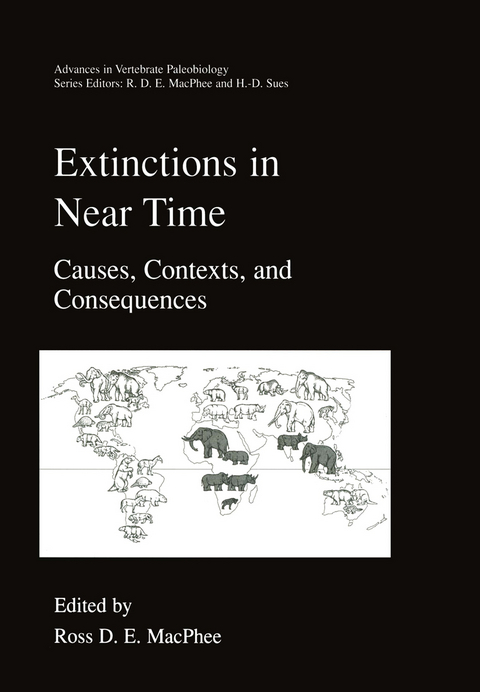
Extinctions in Near Time
Springer-Verlag New York Inc.
978-1-4419-3315-7 (ISBN)
1 • Cretaceous Meteor Showers, the Human Ecological “Niche,” and the Sixth Extinction.- 2 • Prehistoric Extinctions on Islands and Continents.- 3 • The Interaction of Humans, Megaherbivores, and Habitats in the Late Pleistocene Extinction Event.- 4 • The Power of Pleistocene Hunter-Gatherers: Forward and Backward Searching for Evidence about Mammoth Extinction.- 5 • A Comparison of Methods for the Probabilistic Determination of Vertebrate Extinction Chronologies.- 6 • Putting North America’s End-Pleistocene Megafaunal Extinction in Context: Large-Scale Analyses of Spatial Patterns, Extinction Rates, and Size Distributions.- 7 • Rates, Patterns, and Processes of Landscape Transformation and Extinction in Madagascar.- 8 • Extinctions and Local Disappearances of Vertebrates in the Western Mediterranean Islands.- 9 • Introduced Predators and Avifaunal Extinction in New Zealand.- 10 • Late Quaternary Extinctions in Australasia: An Overview.- 11 • Late Pleistocene Megafaunal Extinctions: A European Perspective.- 12 • The Quiet Crisis: A Preliminary Listing of the Freshwater Fishes of the World that Are Extinct or “Missing in Action”.- 13 • Requiem Æternam: The Last Five Hundred Years of Mammalian Species Extinctions.- Systematic Index.- General Index.
| Erscheint lt. Verlag | 7.12.2010 |
|---|---|
| Reihe/Serie | Advances in Vertebrate Paleobiology ; 2 |
| Zusatzinfo | 2 Illustrations, color; 14 Illustrations, black and white; XVII, 394 p. 16 illus., 2 illus. in color. |
| Verlagsort | New York, NY |
| Sprache | englisch |
| Maße | 178 x 254 mm |
| Themenwelt | Naturwissenschaften ► Biologie ► Evolution |
| Naturwissenschaften ► Biologie ► Humanbiologie | |
| Naturwissenschaften ► Geowissenschaften ► Mineralogie / Paläontologie | |
| Sozialwissenschaften ► Ethnologie | |
| Sozialwissenschaften ► Soziologie | |
| ISBN-10 | 1-4419-3315-8 / 1441933158 |
| ISBN-13 | 978-1-4419-3315-7 / 9781441933157 |
| Zustand | Neuware |
| Informationen gemäß Produktsicherheitsverordnung (GPSR) | |
| Haben Sie eine Frage zum Produkt? |
aus dem Bereich


